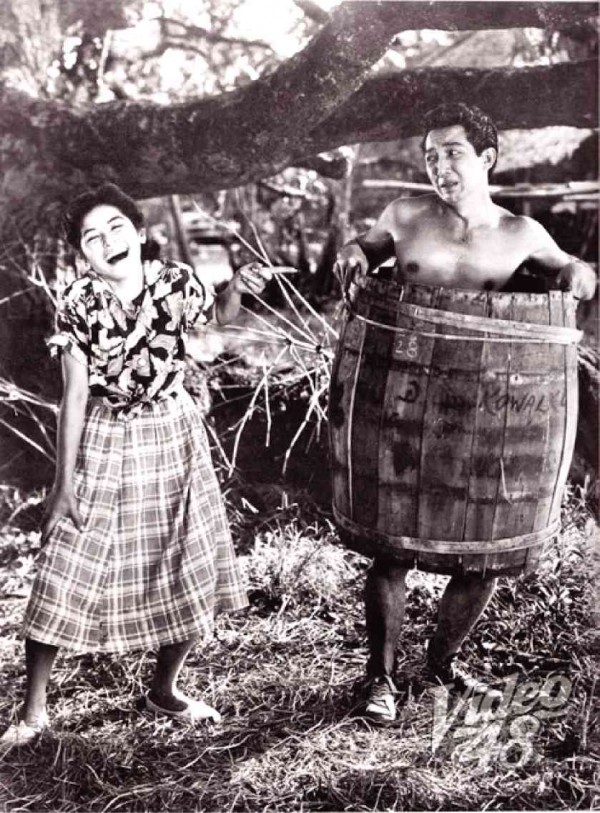Nida Blanca should be lovingly, gratefully remembered
Such are the vagaries of stellar fame and fortune that even the most iconic stars can be “unremembered” in only a few decades. All the more reason, then, for us to go out of our way to celebrate the truly stellar luminaries whose achievements deserve to be gratefully remembered—on a permanent basis.
To start with, it’s sad to note that the late, great Nida Blanca, who left us under tragic and controversial circumstances not all that long ago, has already been forgotten by some viewers—and show biz industry members.
More to the cautionary point, justice has eluded her to date. In addition, Nida deserves to be lovingly remembered, because she was such an amazing talent and person.
She sang, she acted, she danced, she did drama as well as comedy, she won plaudits and awards not just locally but also regionally, and she sequentially conquered different worlds—first the movies, then television. Who knows what other fields would have been hers to master if she had more time!
Above all, we remember Nida for her ebullient love for life, her “extreme” candor and “brutal” honesty, and her concern for less prosperous film workers.
Article continues after this advertisementIf other fans of Nida agree that her cause and contributions should not be forgotten, step forward and join us in persuading our movie channels to come up with a Nida Blanca TV-film festival!
Article continues after this advertisementSo many of her starrers deserve to be screened again. In one of her earliest films, a black-and-white musical, she did an original song-and-dance number about a vendor’s life that we still fondly, luminously remember in our mind’s eye for its exhilarating verve and excellence.
Other Nida starrers we’d love to see again include her sprightly musical films with the similarly iconic Nestor de Villa, as well as one of her early movies megged by the Silos brothers, who weren’t just filmmakers, but inventors, as well. They came up with the “Silos-scope,” a prism placed in front of the movie camera that enabled it to project multiple images of the same performer.
To demonstrate what the Siloscope was capable of, they shot a movie sequence in which the versatile Nida performed a number in different ways—“simultaneously!”
It was decades ahead of its time, and Nida was the perfect performer to tap for the impressive demo!
Upbeat initiatives
Thanks to GMA News Channel for coming up with a showcase for indie movies every Saturday at 10:15 p.m. Now, film buffs who complain that they can’t get access to good indie productions will have a go-to place, even of it’s only once a week, to get a first-hand look at the exciting film movement’s products.
Let’s hope that other TV channels will be similarly supportive of our independent film movement, which is reviving the long-languishing mainstream movie industry.
We also appreciate GMA News Channel’s public service series of lighthearted reminders, “Ugaling Wagi,” that reminds viewers of the importance of good manners and right conduct in our private and work relationships.
Young people, in particular, need to be lightly, brightly educated in this wise—so, keep the timely reminders coming!
Currently ongoing is the stage version of the hit musical film, “Bituing Walang Ningning,” starring Mark Bautista, Cris Villonco and new find Monica Cuenco.
We hope that the homegrown show is a big success, because it will go a long way in disproving the “colonial” belief that foreign shows are inherently better than local productions.
It’s also heartening to note that “Bituin” is playing in a venue that’s usually given over to “imported” productions. If it holds its own at the box office, an important point shall have been made.
Local productions have a hard time breaking into the bigger houses, thus limiting their income-generating potential, so this upbeat development should be cited—and encouraged!
Positive change
If you want to appear on TV, what do you do to improve your chances? A casual survey of “everyman” appearances on television tartly instructs us that local TV shows are partial to man-on-the-street interviewees who are loud, opinionated, over-emotional, blame everybody else except themselves for their many problems, are as gossipy as all heck—and are more than just slightly bipolar!
You see these in-your-face types getting special treatment in front of the cameras, because they’re deemed by TV people to be “entertaining,” “gutsy” and “tell-it-like-it-is”—and thus “reliably” viewable.
But, what about the rest of us, who are shy, choose our words carefully, do our best to think and speak straight and logically, and try not to make florid, horrid spectacles of ourselves?
Alas, we’re dismissed as being too boring and definitely not worth viewers’ while—so, we’ll just have to buy airtime if we really want to end up on television!
—Well, don’t look now, but some TV observers are saying that the broadcast news reporting scene is currently experiencing a major seminal change—and that happened starting with the TV coverage of the Kathmandu earthquake!
The quake scene’s remote location effectively canceled out the built-in advantage of the traditional broadcast media, with many huge organizations unable to get to the small and remote towns affected in time to come up with substantial coverage.
Thus “forced to good,” they had to rely for the most part on “cell-phone journalism” reports, videos and shots sent from the disaster site itself by relative “amateurs,” most of them NGO members or charity workers.
To their credit, they have risen to the unexpected challenge with calm and dispatch, providing the facts that the viewing world needs to get a firmer handle on the unfolding crisis.
TV observers say that this is definitely a sign of better things to come, so from now on, broadcast media outfits have to factor it into their work matrix—more the rule than the exception, as it used to be!
